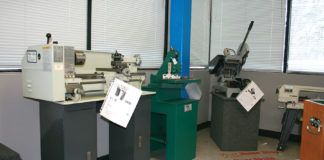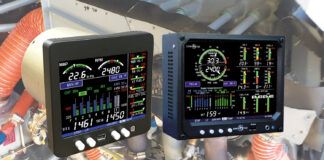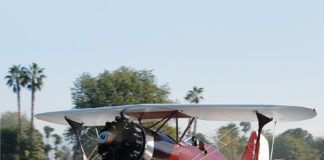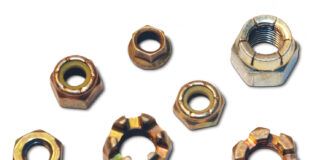Every now and then, there is an incident where a pilot loses control of an airplane that, up to that point, seemed to have acceptable flying qualities. The airplane oscillates about one or more axes and seemingly defies the pilots ever more vigorous attempts to bring it under control. To the pilot, it appears that the airplane has suddenly become dangerously unstable.
In fact, it is not the airplane that is unstable. It is the interaction between the airplane and the pilot that is causing the problem. The pilot, in attempting to regain control, is putting in successive control inputs in opposite directions. These attempts to stop the oscillation are out of phase with the motions of the airplane and are
actually driving the motion.
Until relatively recently, such episodes were called pilot-induced oscillations or PIO. As engineers understanding of the dynamics of the situation improved, they realized that it took a combination of aircraft characteristics, flight conditions and pilot reactions to cause the problem, and the classical description actually put too much blame on the pilot. More recently the situation has been called a “pilot in the loop oscillation” (to preserve the acronym) or “airframe-pilot coupling” (APC).
How PIO Happens
A PIO event is the result of a combination of factors, all of which are necessary for it to happen. The first is a triggering event that sets up the problem. A triggering event is the (usually sudden) occurrence of a situation that causes the pilot to react with a control input. Usually this control input is rapid, and its intended to cause a quick response. There are two types of triggering events: those initiated by the pilot and those that are caused by external forces.
The first situation occurs when the pilot decides to command a rapid change in the flight path or attitude of the airplane. One example of this was the pitch oscillation of the space shuttle Enterprise during landing on its fifth glide flight. The Enterprise, which never flew in space, was used to test the low-speed flying qualities of the shuttle on glide flight launched from a modified 747. On the fifth flight, the Enterprise was on a glide path that would have significantly overshot the planned touchdown point. The pilot attempted to force the ship down to the runway to hit the aim point. The rapid control input, combined with characteristics of the orbiters control system, led to a pitch PIO that caused the ship to bounce multiple times during the ensuing landing. Fortunately, no damage resulted from the bumpy arrival. The triggering event for the PIO was the initial nose-down pitch command from the pilot as he attempted to force the ship to the runway.
Other examples of triggering events occur when the pilot is faced with a tight tracking task such as flying formation or in-flight refueling. In these cases the pilot is attempting to control the position of the airplane precisely, and is more likely to make abrupt control motions to correct a position error.
Evasive maneuvers to avoid other aircraft or the ground can also trigger PIO. The dramatic PIO that led to the crash of the second YF-22 prototype was triggered by a sudden nose-down trim change that happened when the pilot simultaneously retracted the landing gear and lit the afterburners with the pitch thrust vectoring system active. The pilot perceived a sudden nose-down motion of the airplane and, being near the ground, responded with a rapid pull on the stick.
PIO can also be triggered by external forces such as gusts, particularly when the pilot is trying to control the airplane precisely. I encountered a mild roll PIO during an early runway-hop test flight of a new homebuilt some years ago. The airplane had relatively powerful roll control and, on this particular hop, was out of trim nose down. I was pulling on the stick to keep it airborne about a foot above the runway. The triggering event was a sudden puff of wind across the runway that moved the airplane off the centerline. I responded with an upwind stick input that rolled the airplane a bit too far, and then overcorrected the other way to keep the bank angle down. I ended up chasing the airplane in roll for two or three cycles before I realized what was happening and froze the stick in the center, which stopped the oscillation. My desire to keep the airplane on the centerline combined with the need to keep the wings nearly level caused the problem. It never reoccurred because a major contributor had been the out of trim condition that forced me to pull on the stick. (More on this later.)
Overcorrection and Out-of-Phase Control Inputs
The triggering event causes the pilot to make an initial control input to
correct the flight path or attitude of the airplane. For a PIO to ensue, the pilot must perceive that the control input has not had the desired effect and make successive compensating control inputs. Interestingly, PIO can happen if the pilot thinks the control motion is not doing enough or when the initial control motion is too effective.
If the airplane does not appear to respond quickly, the pilot will increase the control input to force the airplane to do what is wanted. This will accelerate the commanded rate (pitch, roll or yaw). If the rate gets too high, the airplane will overshoot the attitude the pilot is trying to command; the pilot will respond with a rapid reversal of the control and the cycle will repeat. This is what happened to the Enterprise Because the initial effect of deflecting the elevons down to force the ship down was to increase lift, the pilots perception of the developing nose-down pitch rate was masked by the initial sensation of an upward acceleration of the whole vehicle. This caused the pilot to make a more aggressive nose-down input. By the time the effect of the nose-down elevon became apparent, the pitch-down rate was excessive and the pilot responded with a large nose-up input, which repeated the cycle several times.
In the opposite situation the pilot responds to the triggering event with a control input that produces an immediate overcorrection. The pilot will respond to this sudden motion with another large control input that will produce an opposite overcorrection, and again the cycle repeats. This was what happened with the YF-22. The pilots initial stick pull pitched the airplane up rapidly. The pilot responded with a push, and the PIO cycle was underway. This particular situation was exacerbated because the pilot was trying to avoid two dangerous barriers. The first was the ground (nose-down) and the second was stall (nose-up). The need to avoid these barriers likely caused the pilot to make more vigorous control inputs than would have been required at altitude where a greater deviation in the flight path would not have been a problem.
Control Lag
For PIO to happen there must be more than a triggering event and a pilot reaction. There must be something about the stability and control characteristics that causes the pilot to have difficulty precisely controlling the attitude and rates of the airplane. Several factors may contribute.
Any situation that causes a lag between the pilot input to the controls and the initial acceleration of the vehicle can contribute to PIO. If the control has a lag, the pilot will perceive that the initial control motion was ineffective and increase the control input. By the time the commanded motion starts, the pilot has increased the control deflection to more than is needed. The rate (pitch, roll or yaw) will quickly build to an excessive level. The pilot will then reverse the control input and, because of the lag, is likely to over control in the other direction when the compensation does not stop the initially commanded rate quickly enough. The pilot ends up chasing the airplane.
Lag can be a big problem on airplanes with powered control systems because the rate the control surfaces can move is limited by the capabilities of the actuators moving the controls. Its quite possible for a rapid stick motion to put the actuators at their rate limit. This causes the controls to move more slowly than the pilot thinks he is commanding with the stick. The lag can get worse if the pilot makes rapid control reversals, as the actuators have to stop and then get going again in the opposite direction. Control surface rate limiting has been a contributing factor in several well-known PIO incidents with prototype fighters and experimental military airplanes.
For small civilian airplanes pure control lag is rarely a problem, but it is a significant factor for rotorcraft,
particularly gyroplanes. When the pilot of an airplane moves the stick fore and aft, he is commanding a pitch rotation of the fuselage directly. The pilot of a rotorcraft is commanding a change in the attitude of the rotor, not the fuselage. A stick-back control input, for example, will cause the rotor tip-path plane to tilt aft. This tilt rotates the rotor thrust force aft, which in turn produces an aft force on the top of the rotor mast. This aft force on the top of the mast causes the fuselage to rotate nose up. All of this takes time, so the initial nose-up motion of the fuselage lags the motion of the rotor significantly. A pilot who tries to key on the pitch rate of the fuselage will end up over controlling dramatically and get into a pitch PIO. This inherent lag is why the pilot technique for controlling a rotorcraft in pitch is significantly different from the technique for controlling an airplane.
It is also why novice gyroplane pilots sometimes get in trouble. A common component of gyroplane PIO accidents is a rapid control input by the pilot in an attempt to correct a pitch rate or attitude excursion. The pilot tries to command the vehicle to change attitude faster than the lag in the system allows, and ends up over controlling.
Deadband and Breakout
When the pilot puts pressure on the controls, he expects the airplane to respond. If the plane does not respond, the pilot will push or pull harder. There are two control characteristics that can combine with this natural pilot instinct and cause problems.
The first is a deadband in the controls. On some airplanes the first few degrees of control motion do not cause any significant moment on the airplane. The cause of this can be either aerodynamic or mechanical. Some control surfaces have very little aerodynamic effect at small deflections. Slop in linkages or slack in control cables can cause a situation where some portion of the motion of the stick or rudder pedals does not move the control surface.
Deadband causes problems for pilots for two reasons. First, if the initial control input is within the deadband, the pilot will tend to overreact and add extra control input to get the airplane to move. If the situation requires the pilot to reverse the control input (for example from nose up to nose down), then the stick must travel through the deadband. The pilot will tend to move the stick rapidly through the deadband region because the motion is not having the desired effect. When the control gets out of the deadband, the rapid stick motion is likely to cause over control. A PIO can ensue as the pilot moves the stick rapidly back and forth across the deadband.
Some controls systems have a tendency to resist being moved from their initial position, usually due to friction in the system. In such a situation, the pilots push or pull on the control does not move the control at all until the force exerted exceeds the breakout force. High breakout forces make precise control difficult, because the pilot must initially push hard on the stick to get it to move at all, and then precisely modulate stick force after the stick starts to move. Often, the breakout force itself is high enough to command too much control after the system breaks free from the static friction. If the pilot must move the control through the breakout region repeatedly, the situation is even more difficult.
Poor Control Harmony and Mistrim
The stick controls both pitch and roll. Accordingly, the pilot must precisely modulate both fore and aft force on the stick for pitch control, and lateral force for roll. If the forces required on the two axes are similar, this task is relatively
easy. If the force in one axis is much larger than the force required in the other it becomes difficult. The pilot has trouble perceiving the level of force in the light axis while exerting a much larger force in the heavy axis. This is what happened during the PIO I described earlier in the homebuilt. The nose-down mistrim of the airplane forced me to pull about 10 pounds on the stick to hold attitude. The roll axis was much lighter and, as a result, I ended up making significantly larger roll inputs than I intended. Once the airplane was properly trimmed, the controls were nicely harmonized, and the PIO situation never reoccurred.
Airframe Stability
The natural stability and damping of the airframe is a primary defense against PIO. If the airplane is stable and well-damped, PIO is much less likely.
Marginal stability, particularly in pitch or yaw, can increase susceptibility to PIO because relatively small control motions will cause relatively large responses by the airplane, increasing the chances that the pilot will over control.
Barnaby Wainfans day job is in aerodynamic design for Northrop Grummans Advanced Design organization where he is a principal engineer. A private pilot with single engine and glider
ratings, Barnaby has been involved in the design of unconventional airplanes including canards, joined wings, flying wings and some too strange to fall into any known category.













